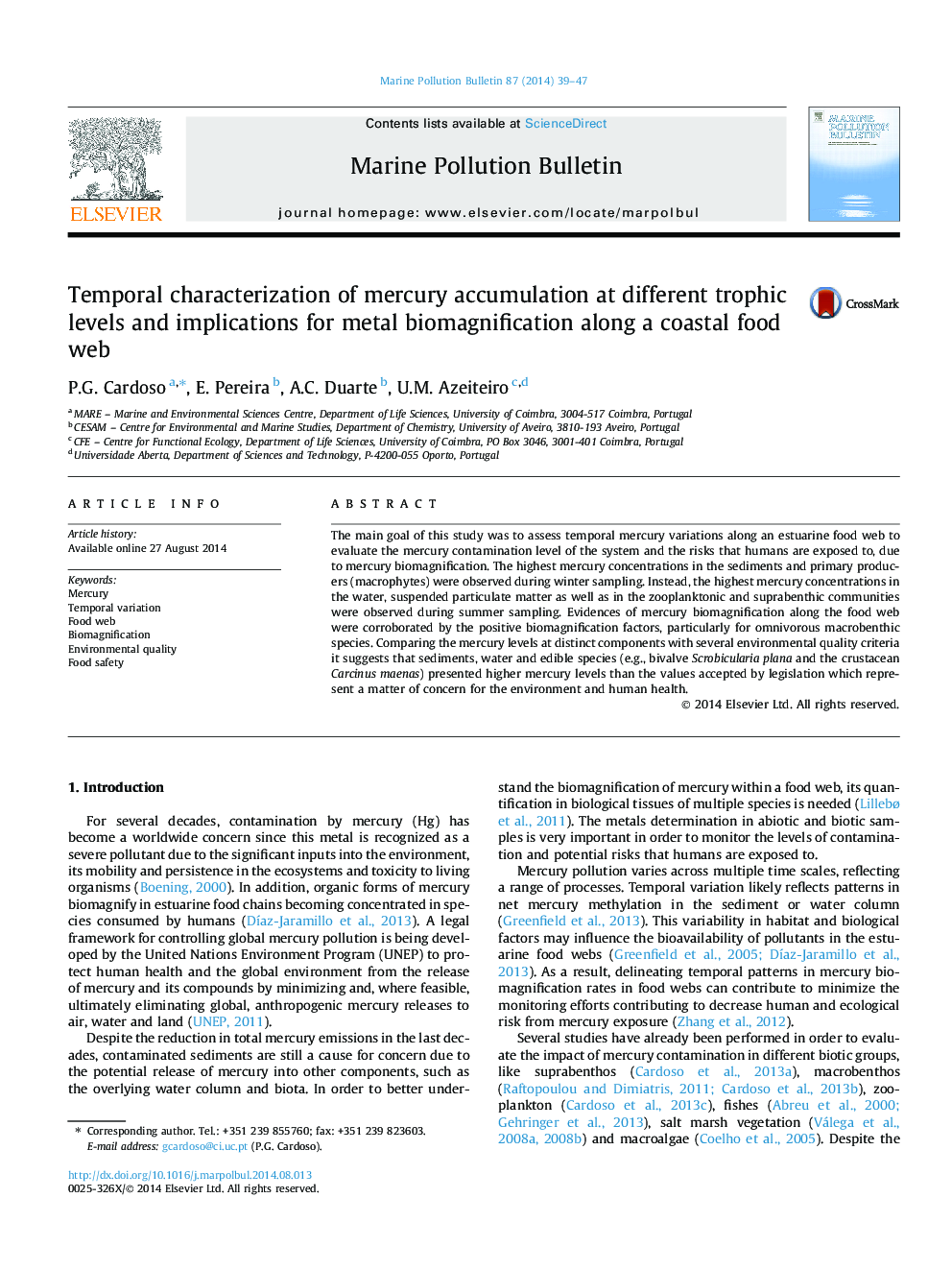| Article ID | Journal | Published Year | Pages | File Type |
|---|---|---|---|---|
| 6357610 | Marine Pollution Bulletin | 2014 | 9 Pages |
Abstract
The main goal of this study was to assess temporal mercury variations along an estuarine food web to evaluate the mercury contamination level of the system and the risks that humans are exposed to, due to mercury biomagnification. The highest mercury concentrations in the sediments and primary producers (macrophytes) were observed during winter sampling. Instead, the highest mercury concentrations in the water, suspended particulate matter as well as in the zooplanktonic and suprabenthic communities were observed during summer sampling. Evidences of mercury biomagnification along the food web were corroborated by the positive biomagnification factors, particularly for omnivorous macrobenthic species. Comparing the mercury levels at distinct components with several environmental quality criteria it suggests that sediments, water and edible species (e.g., bivalve Scrobicularia plana and the crustacean Carcinus maenas) presented higher mercury levels than the values accepted by legislation which represent a matter of concern for the environment and human health.
Related Topics
Physical Sciences and Engineering
Earth and Planetary Sciences
Oceanography
Authors
P.G. Cardoso, E. Pereira, A.C. Duarte, U.M. Azeiteiro,
